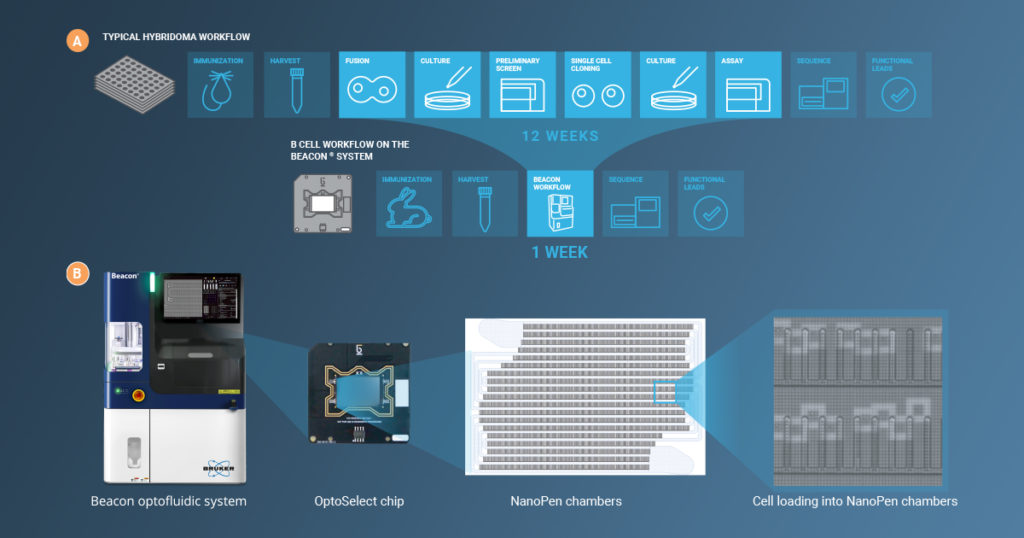In antibody discovery, the screening of diverse antibody sequences is crucial to pinpoint the suitable antibodies for specific purposes. This challenge is particularly relevant in the context of rabbit antibodies, which are uniquely valuable reagents for basic research, diagnostics, and therapeutics development.
Understanding Rabbit Antibodies
Rabbits possess unique gene diversification strategies that result in antibodies with high affinity and specificity. Their strong immune responses to epitopes, often not immunogenic in rodents, make rabbit antibodies particularly valuable. Additionally, the larger body size and lack of inbreeding in rabbits contribute to the increased quantity of cells collected per animal and the diversity of antibodies produced.
While polyclonal rabbit antibodies find widespread use in various research applications, the preference for monoclonal antibodies is evident, especially in diagnostic and therapeutic applications due to their well-defined specificity and stability. However, compared to polyclonal options, the availability of rabbit monoclonal antibodies is limited, and access to rabbit hybridomas is restricted to a single source. This scarcity emphasizes the importance of efficient screening for B cell diversity, as demonstrated in a Bruker Cellular Analysis study presented at the Antibody Engineering & Therapeutics conference, which offers a promising solution to address the limitations in obtaining diverse rabbit monoclonal antibodies.
In addressing these challenges, the study aimed to explore alternative sources to maximize antibody diversity offered from a single immunized animal. The researchers focused on isolating and screening memory B cells from a single immunized rabbit, derived from three distinct compartments: PBMCs from blood, splenocytes from the spleen, and lymphocytes from lymph nodes.
Exploring Antibody Diversity with Bruker’s Opto® Memory B Discovery and Beacon® System
Utilizing Bruker’s Opto® Memory B Discovery Rabbit Sample Prep kit on the Beacon® system, the team successfully isolated and activated memory B cells from each compartment. This enabled rapid screening of activated memory B cells to identify KLH antigen-specific B cells. Subsequently, our OptoSeq® BCR V2 kit was employed to recover antigen-specific antibody sequences from each compartment. Critically, the entire workflow, from sample to sequences, was completed in less than two weeks, with the B cell screening from each compartment on the Beacon system completed within a single day.
Analysis of the data revealed that the recovered sequences within each compartment were predominantly unique, indicating substantial diversity within each compartment individually. Notably, when comparing sequences recovered from all compartments collectively, only three out of the 95 sequences overlapped, underscoring the considerable diversity achieved by screening multiple compartments compared to a single compartment.
Our reagents demonstrated generic compatibility within each species, irrespective of the compartment from which the memory B cells originated. The Beacon® platform showcased agnosticism to the memory B cell compartment, allowing measurement of antibody secretion and specificity regardless of the compartment source.
The implications of these findings are significant. Our world-class reagents provide researchers with access to additional diversity without the need for extra immunizations or optimizations to adapt to cells from different compartments. The Beacon® platform empowers researchers to adapt screening reagents to suit any species or cell type.
Future Directions: Maximizing Diversity
This study suggests the existence of additional diversity within different organ compartments in various mammalian systems. It opens the door for the design and scheduling of isolation and screening workflows that yield maximum diversity. By screening both plasma cell and memory B cell populations derived from multiple compartments—all from a single animal—researchers can efficiently maximize diversity, offering a practical solution for future studies in antibody discovery.


